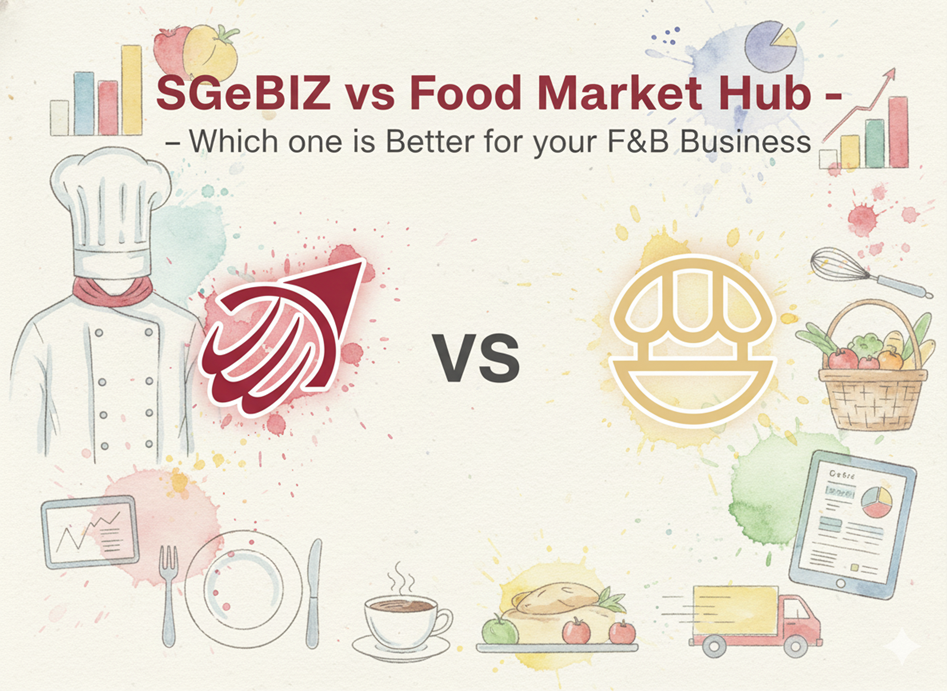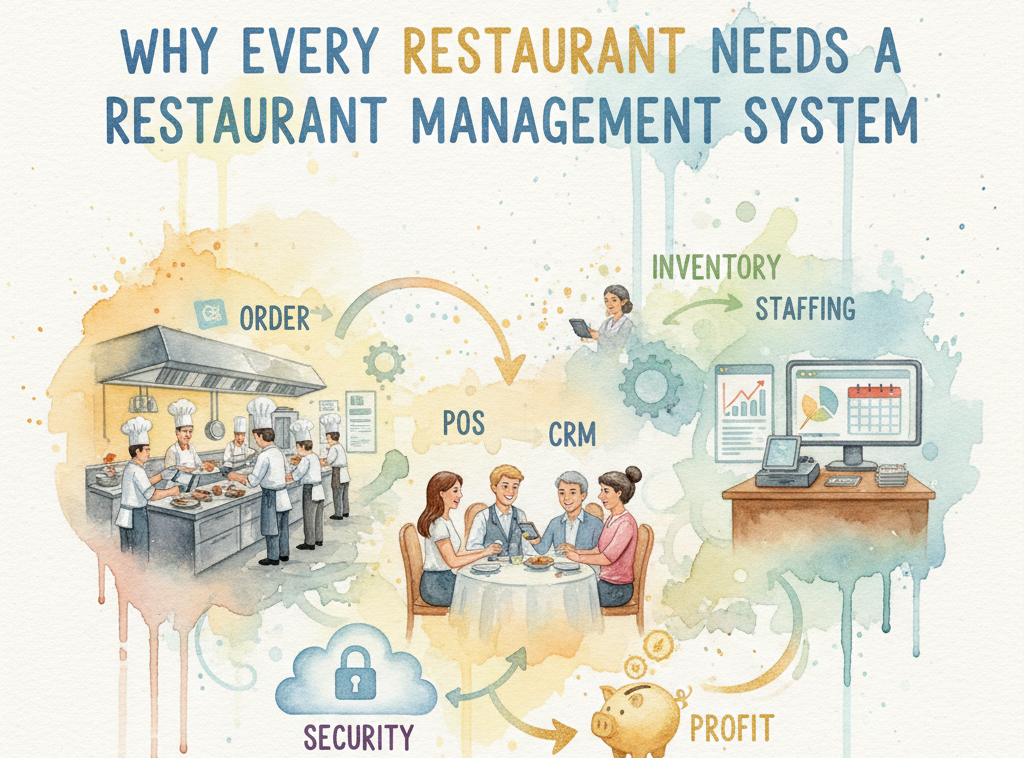Food Costing Simplified: Are You Overspending on Your Ingredients?

Running a restaurant is a culinary journey filled with passion, flavor, and creativity. But amidst the sizzle of the grill and the aroma of freshly baked bread, there's a critical aspect that often demands equal attention – food costing. It's the secret recipe behind managing your restaurant's expenditure effectively and ensuring that your business remains not only delicious but also financially sustainable. In this comprehensive guide, we'll demystify food costing for restaurants and provide you with the insights and strategies you need to ensure you're not overspending on your ingredients.
Understanding Food Costing
Food costing is the process of calculating the cost of individual menu items, taking into account the price of ingredients, labor, overhead, and other associated expenses. It's the backbone of effective restaurant financial management and plays a crucial role in determining menu prices, optimizing profit margins, and controlling expenditures.
Why Food Costing Matters for Restaurants
- Profit Margin Management: Food costing allows you to set menu prices that not only cover your expenses but also ensure a healthy profit margin.
- Waste Reduction: Accurate food costing helps identify areas of waste, enabling you to minimise food wastage and reduce unnecessary expenses.
- Inventory Control: It assists in managing your inventory efficiently, preventing overstocking or understocking of ingredients.
- Pricing Strategy: Food costing provides valuable insights into which menu items are the most profitable and guides your pricing strategy.
The Formula for Food Cost Percentage
The heart of food costing is calculating the food cost percentage for each menu item. This percentage represents the portion of your revenue that goes toward covering the cost of ingredients. The formula is simple:
Food Cost Percentage = (Cost of Ingredients / Selling Price) x 100
For example, if the cost of ingredients for a dish is $5, and you sell it for $15, the food cost percentage would be (5 / 15) x 100 = 33.33%.
Challenges in Food Costing for Restaurants
1. Fluctuating Ingredient Prices:
Challenge: Ingredient prices can be volatile due to factors like seasonality, market demand, weather conditions affecting crop yields, and changes in supplier pricing. These fluctuations can make it challenging to maintain consistent food costs.
Strategy: To address this challenge, restaurants can:
- Monitor Ingredient Prices: Keep a close eye on ingredient prices and adjust your menu and pricing accordingly. Consider using software or tools that track price changes and provide alerts.
- Seasonal Menu Adjustments: Develop seasonal menus that capitalize on lower-cost, in-season ingredients. Rotate menu items to accommodate price changes.
2. Recipe Consistency:
Challenge: Maintaining consistency in recipes across shifts and cooks is vital for accurate food costing. Variations in ingredient quantities or preparation methods can lead to inaccuracies.
Strategy: To ensure recipe consistency:
- Standardise Recipes: Create standardised recipes with precise ingredient quantities and preparation steps. Train your kitchen staff to follow these recipes consistently.
- Recipe Testing: Regularly test recipes to verify consistency and taste. Make adjustments as needed and update your costing calculations accordingly.
3. Waste and Shrinkage:
Challenge: Waste, spoilage, and shrinkage can significantly impact food costs if not properly managed. This can occur due to over-portioning, improper storage, or perishable ingredient losses.
Strategy: To minimise waste and shrinkage:
- Portion Control: Implement portion control measures to ensure that servings are consistent in size, reducing over-portioning and waste.
- Inventory Management: Use inventory management systems to track ingredient usage and monitor expiration dates. Rotate perishable items to reduce spoilage.
- Staff Training: Train your staff on proper storage and handling techniques to minimise ingredient losses.
Strategies for Effective Food Costing
- Regular Price Updates: Keep ingredient prices updated in your costing calculations to reflect real-time costs accurately. Regularly review and adjust menu prices as ingredient prices fluctuate.
- Recipe Standardisation: Standardise recipes and portion sizes to maintain consistency and control ingredient usage. Ensure that your kitchen staff follows these standardised recipes diligently.
- Inventory Tracking: Implement inventory management systems to track ingredient usage, monitor stock levels, and reduce waste. These systems can provide real-time insights into your inventory, helping you make informed decisions.
- Supplier Negotiations: Establish strong relationships with your suppliers and negotiate for better prices and discounts, especially for high-cost ingredients. Buying in bulk or collaborating with other restaurants can also lead to cost savings.
Unleashing Procurement Intelligence with Food Market Hub
While the strategies mentioned above are crucial for effective food costing, modern technology can further streamline the process. Platforms like Food Market Hub offer comprehensive solutions for restaurants, enabling them to manage procurement, track ingredient prices, and optimise menu costs effortlessly.
With Food Market Hub, you can:
- Centralize Procurement: Streamline your procurement process by centralising orders from various suppliers, making it easier to track and manage costs.
- Real-time Price Monitoring: Access real-time data on ingredient prices, allowing you to adjust menu prices promptly to reflect cost changes accurately.
- Supplier Negotiations: Leverage data insights to negotiate with suppliers effectively, ensuring you get the best prices and terms.
- Recipe Standardisation: Use the platform to standardise recipes and portion sizes, ensuring consistency and accuracy in your costing calculations.
- Inventory Management: Effortlessly track ingredient usage and monitor stock levels with Food Market Hub's inventory management tools, reducing waste and optimising stock levels.
Mastering Food Costing for Restaurant Success
Food costing may seem like a complex recipe, but it's a skill every restaurant owner and chef should master. It's the key to maintaining financial health, minimising waste, and ensuring your restaurant remains profitable. By demystifying food costing and implementing effective strategies, you can strike the perfect balance between culinary creativity and financial sustainability. Remember, a well-calculated food cost percentage not only benefits your bottom line but also your customers who get to enjoy your delicious creations at a fair price.
So, take the time to evaluate your food costing processes, invest in training and technology, and embrace the art of culinary financial management. With a meticulous approach to food costing, your restaurant can not only survive but thrive in a competitive dining landscape. As you continue to create culinary wonders, let your financial acumen be the secret ingredient that ensures your restaurant's long-lasting success. Happy cooking and smart costing!










